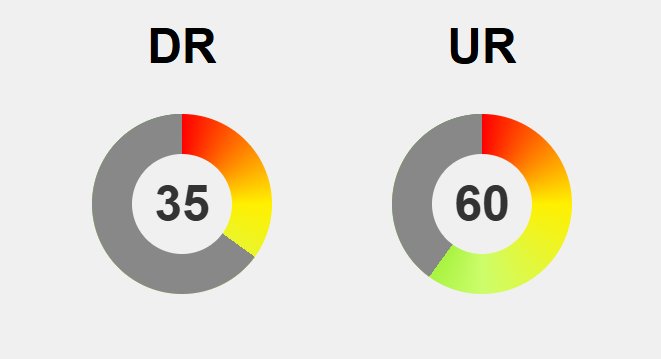Choosing the ideal cardio activity—walking, jogging, or running—depends on your unique fitness goals and physical condition. Each option offers distinct benefits and challenges: walking is safest and most accessible, perfect for beginners or recovery, while jogging balances effort and endurance. Running delivers maximum calorie burn and cardiovascular gains but comes with higher injury risks. Are you willing to push your limits for faster results, or is a gentler approach more sustainable? This guide explores how to assess your fitness level, set realistic goals, and select activities that keep you motivated. It emphasizes the importance of proper gear, tracking tools, and variety to prevent injuries and maintain progress. Ultimately, the most effective routine is one you enjoy and can sustain long-term, transforming your health journey into a rewarding, lifelong commitment. Ready to find the perfect match for your lifestyle and aspirations?
Discover Your Perfect Cardio Activity for a Healthier You
Choosing the right cardiovascular activity is a crucial step in shaping your overall fitness journey. Whether your goal is to improve heart health, lose weight, or simply stay active, understanding the options available helps you make informed decisions. From a leisurely walk to a vigorous run, each activity offers distinct benefits that can match different lifestyles and fitness levels.
Walking is often the easiest place to start. It’s low-impact, gentle on your joints, and requires no special equipment. Because it can be done almost anywhere—whether in your neighborhood, at the park, or on a treadmill—it’s accessible for most people. Regular brisk walking not only helps lower blood pressure and strengthen your heart but also reduces stress, making it a reliable foundation for consistent activity.
As you look to increase intensity, jogging becomes a natural next step. It burns more calories than walking and boosts endurance faster, making it a popular choice for those aiming for quicker results. While it does put slightly more strain on your joints, choosing softer surfaces and good footwear can help manage those concerns. Jogging strikes a balance, offering a meaningful workout without demanding the technical skill or time commitment of running.
Running takes things to the next level. It delivers maximum calorie burn and cardiovascular benefits in a shorter period. It also helps build muscular strength and stamina, ideal for people with specific fitness goals. However, it requires proper technique and attentive recovery to avoid injuries, especially for beginners. Starting slowly and listening to your body are key to making running a sustainable part of your routine.
Understanding these options allows you to select an activity that aligns with your current fitness level and lifestyle. The goal isn’t just to push for the most intense workout but to find something you enjoy and can stick with long-term. Consistency remains the most important factor in making meaningful progress on your health journey.
Explore the Wide World of Cardiovascular Exercises
Cardiovascular exercises, commonly called cardio, cover a wide range of activities designed to keep your heart and lungs in top shape. These exercises are essential for building stamina, managing weight, and boosting overall health. Whether you prefer a gentle walk or a high-energy run, each activity offers unique advantages that suit different fitness levels and goals.
Walking is the most accessible form of cardio. It’s low-impact, easy on your joints, and doesn’t require any special equipment—just a comfortable pair of shoes. Because you can do it almost anywhere, from your neighborhood to the park, walking is perfect for beginners, older adults, or anyone recovering from injury. Regular brisk walking helps lower blood pressure, strengthen the heart, and reduce stress, creating a steady foundation for ongoing activity.
Moving to a moderate intensity, jogging offers a step up in effort. It burns more calories and enhances endurance more quickly than walking. While it does put a bit more strain on your joints, choosing softer surfaces and proper footwear can make it safer and more comfortable. Jogging strikes a balance between effort and accessibility, making it a popular choice for those looking to challenge themselves without jumping into more intense activities.
Running takes things further, providing maximum cardiovascular benefits in a shorter time. It helps build muscular strength and stamina while burning calories efficiently. However, it’s also the most demanding and carries a higher risk of injury, such as shin splints or joint pain if not approached carefully. Starting gradually, focusing on good form, and listening to your body are key to making running a sustainable part of your fitness routine.
Beyond these basics, activities like cycling, swimming, rowing, and aerobic classes offer additional options. Swimming is gentle on joints, cycling is low-impact yet effective, and rowing combines strength with cardio. Exploring different activities keeps your routine fresh and targets various muscle groups, enhancing overall fitness and preventing boredom.
Knowing the variety of cardio exercises available helps you choose what’s best for your goals and lifestyle. Whether it’s a slow walk or an intense run, each activity contributes uniquely to your health. The key is to find what feels good and stick with it, building a routine you’ll enjoy and maintain over time.
Fundamental Principles for Choosing Your Ideal Cardio Routine
When choosing the right cardio activity, your personal factors should come first. Your current fitness level and overall physical condition help determine what’s manageable today and what might be too much tomorrow. Tuning into your body’s signals is essential; discomfort or pain are clear signs to pause, modify, or switch activities. Listening to these cues prevents injury and keeps your routine sustainable.
Goals play a crucial role in guiding your choice. If weight loss is your priority, higher-intensity options like running or interval training can be most effective. Conversely, if endurance or general health are your main focus, moderate activities such as brisk walking or steady jogging fit well. Understanding what you want to achieve helps you select activities that align with your ambitions without overwhelming your body.
Knowing your target heart rate provides valuable insight. Exercising within a moderate intensity—where breathing is heavier but conversation is still possible—ensures you’re working efficiently without overexertion. High-intensity efforts should push your limits but not to the point of exhaustion. This awareness allows you to tailor workouts to meet your goals safely while tracking progress more accurately.
Your fitness goals should also influence the intensity and duration of your workouts. For quick calorie burn and fat loss, activities that elevate your heart rate rapidly are ideal. For building stamina or recovery, gentler, steady-state exercises provide a steady, manageable challenge. Matching the activity to your specific aims keeps motivation high and results steady, making your routine more effective.
It’s vital to assess your physical condition honestly before jumping into new or more intense activities. If you have mobility issues or health concerns, starting with low-impact options like swimming or walking is wise. These build a foundation without risking setbacks. As strength and confidence grow, you can gradually increase intensity, always respecting your body’s limits.
Injury prevention is closely linked to activity choice. High-impact exercises, while effective, carry a greater risk of joint strain or overuse injuries. Incorporating strength and flexibility exercises—especially for your hips, core, and legs—helps protect against common issues. Mixing different types of cardio also prevents overuse and boredom, supporting long-term consistency.
Ultimately, selecting the right cardio depends on honest self-assessment and aligning activities with your goals and physical state. The best workout is one you enjoy and can sustain over time. By listening to your body, setting realistic goals, and choosing appropriate activities, you create a foundation for a healthy, enjoyable fitness journey.
To explore a variety of cardio options tailored to different needs, consider researching different routines and their benefits. For more detailed guidance on selecting effective workouts, you can visit this comprehensive guide on the best cardio exercises. Incorporating diverse activities can keep your routine engaging and well-rounded, supporting sustained progress and enjoyment.
Practical Strategies to Select the Right Cardio for Your Goals
Choosing the right cardio activity means matching your routine to your personal goals and current physical condition. If you’re new to exercise or recovering from an injury, starting with low-impact options like walking or swimming keeps you moving without risking setbacks. These activities are gentle on your joints and easy to incorporate into daily life, making them ideal for building a consistent habit.
For those aiming to burn calories more efficiently or improve endurance, moderate activities such as jogging or brisk walking are good choices. They strike a balance between effort and sustainability, providing noticeable progress without overwhelming your body. Gradually increasing your pace or duration helps you avoid injury while boosting your fitness level.
If weight loss is your main goal, higher-intensity options like running or interval training can accelerate results. These activities elevate your heart rate quickly and burn more calories in less time. However, they demand proper technique and recovery to prevent overuse injuries, so starting slowly and listening to your body is key.
Assess your current physical condition honestly before jumping into more demanding exercises. If you have mobility limitations or health concerns, ease into activity with gentle movements. As your strength and confidence grow, you can add more intensity gradually, always respecting your limits.
Incorporating variety into your routine prevents boredom and overuse injuries. Alternating between walking, jogging, and other activities helps target different muscle groups, keeping your progress balanced and sustainable. It also keeps your motivation high by offering fresh challenges.
Pay attention to how your body responds during and after exercise. Discomfort or pain are signals to pause or adjust your activity. Warm-ups, cool-downs, and stretching routines help prepare your muscles and joints, reducing the risk of injury and soreness.
Investing in supportive gear, like proper shoes suited to your chosen activity, makes a noticeable difference. Comfortable footwear absorbs shock and stabilizes your movements, making workouts safer and more enjoyable. Using fitness trackers or apps can help monitor your progress and keep you motivated.
Finally, set realistic, achievable goals and revisit them regularly. Adjust your routine as needed to match your evolving fitness level and interests. Consistency and enjoyment are the keys to turning a good routine into a lifelong habit that supports your health and happiness.
Essential Tools and Resources to Enhance Your Cardio Journey
Supporting your cardio routine with the right tools can make a significant difference in safety, comfort, and progress. Investing in a quality pair of athletic shoes tailored to your chosen activity is one of the smartest steps you can take. Proper footwear helps absorb shock, stabilize your movements, and reduce the risk of injuries like strains or joint pain. When your shoes fit well and provide adequate support, exercising feels more comfortable, making it easier to stay consistent.
Wearable devices, such as fitness trackers or smartwatches, have become invaluable allies in tracking your progress. They monitor key metrics like heart rate, distance, pace, and calories burned, offering real-time feedback that helps you adjust workout intensity. Many models also include GPS, sleep tracking, and motivational reminders, encouraging you to stay active and engaged with your goals. These tools turn data into motivation, making it easier to see tangible improvements over time.
Beyond shoes and wearables, a variety of resources can support your fitness journey. Mobile apps with guided workouts, interval timers, and motivational challenges add structure and variety, helping prevent boredom. Online communities foster accountability and encouragement, keeping you motivated during tough days. Educational content, such as videos and tutorials, can improve your technique, making your workouts safer and more effective.
Injury prevention tools like foam rollers, resistance bands, and mobility aids are also worth considering. Regular warm-ups, dynamic stretching, and cool-down routines help prepare your muscles and joints, reducing soreness and overuse injuries. These simple investments in your equipment and knowledge create a safer, more enjoyable exercise experience, increasing the likelihood of sticking with your routine long-term.
Having the right tools isn’t just about safety—it’s about making your workouts smarter and more satisfying. When your gear supports your efforts, exercise becomes less of a chore and more a rewarding part of your day. Periodically reassessing your equipment and exploring new apps or techniques keeps your routine fresh and aligned with your evolving goals. With thoughtful tools and resources, you set yourself up for a healthier, more sustainable fitness journey.
Final Tips and Next Steps for a Sustainable Cardio Lifestyle
Choosing the right cardio activity isn’t about chasing the most intense or popular option; it’s about finding what truly fits your goals, current fitness level, and lifestyle. Whether you prefer walking, jogging, or running, the key is selecting something you enjoy and can stick with over the long haul. Consistency outperforms intensity when it comes to building a sustainable routine that supports your health and well-being.
Start with an honest assessment of your current fitness and any limitations you might have. If you’re new to exercise or recovering from injury, low-impact options like walking or swimming are gentle yet effective ways to build a foundation. As your strength and endurance grow, gradually introduce more challenging activities, such as jogging or running, always listening to your body’s signals.
Pay attention to how your body responds during and after each workout. Discomfort or pain are signs to pause or modify your activity. Incorporate warm-up and cool-down routines, along with stretching, to protect your muscles and joints. These small steps help prevent injuries and make your workouts more enjoyable and sustainable.
Mixing different forms of cardio keeps your routine fresh and helps prevent overuse injuries. Alternating between walking, jogging, cycling, or swimming targets various muscle groups and keeps motivation high. Remember, small, consistent efforts lead to meaningful progress over time, so celebrate each step forward.
Investing in supportive gear, like well-fitted shoes and tracking devices, can make a noticeable difference. Proper shoes reduce injury risk, while fitness trackers provide motivation and feedback, helping you stay on course. Use these tools to monitor your progress and set realistic goals that push you just enough without risking burnout.
Stay flexible with your routine. Goals may evolve, and your interests might shift over time. Revisit your plans periodically, adjusting intensity, duration, or activities to keep things aligned with your current needs. This adaptability keeps your fitness journey engaging and sustainable.
Remember, every step you take toward a more active lifestyle contributes to better health and increased vitality. Patience and persistence are your best allies. By making mindful choices, listening to your body, and enjoying the process, you’ll build a lifelong habit that benefits your body and mind alike.






